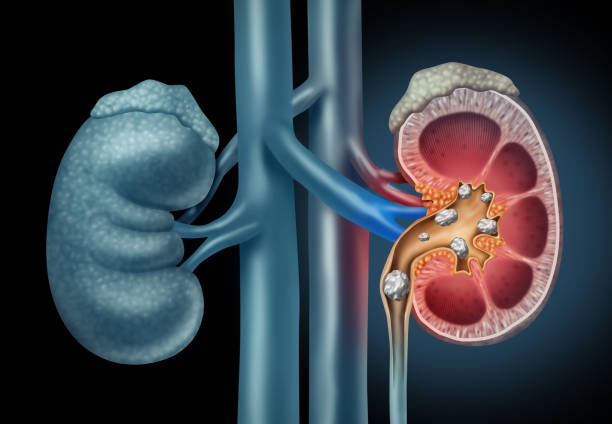
Kidney Stone / Renal calculi
Kidney stone actually forms when the urine get concentrated, allowing minerals to crystallize and stick together. This kidney stone is pebble like appearance and has the color of yellow or brown. Since hard deposits are made of mineral and salt that forms inside your kidney. Diet, excess body weight, some medical conditions and certain supplements and medications affect any part from kidney to urinary bladders.
A kidney stone usually will not cause symptoms until it moves around within your kidney or passes into the ureter. It may block the flow of urine and causes the kidney to swell and the ureter to spas, which can be very painful.
Signs and Symptoms:
Causes:
Calcium Stones:
Most kidney stones are calcium stones. It is usually in the form of calcium oxalate which is the substance made daily by your lifestyle or absorbed from your diet. Certain fruits, nuts, chocolates, and vegetables have high oxalate content. Also, this may occur in the form of calcium phosphate. It is the type of stone which is more common in metabolic conditions, such as renal tubular acidosis. This calcium stone contains calcium oxalates, calcium phosphate or a combination of the two. Calcium oxalate dehydrate which jagged edges and monohydrate which is a smooth surface.
Struvite Stones:
This Struvite stone form in response to a urinary tract infection. In which this kind of Struvite stone are larger than others. Know that this stone might grow quickly and become quite larger. Often, they sometimes have few symptoms of kidney stone or little warming.
Medusa Tamsulosin:
It relaxes the uterus which is a part of urinary tract which promotes stone passage of ureteric stones.
Xanthine Stone:
It is widely caused by enzyme deficiency that builds up the xanthene deposits.
Uric Acid Stones:
Uric acid stone is a crystal clears stone which may be in pebble like appearance, harden in outside and soften in inside of the stone. They are formed in the people who lose too much fluid because of chronic diarrhoea or mal absorption, those who eat a high-protein dish. Also, the people those who with diabetes or metabolism syndrome have the crystal-clear stone. Certain genetic factors also may increase the risk of uric acid stones.
Cysteine Stones:
This kind of stone forms in the people with a hereditary disorder called Cystinuria that cause the kidney to excrete too much of a specific amino acid.
Silica Stone:
It caused by certain medications which includes Oxalates, Xanthine, Cysteine, and Struvite.
Dietary Factors:
Risk Factors:
Chronic diarrhoea can cause changes in digestive process that affect your absorption of calcium and water thus it increases the amount of stone-forming substance in your urine
Other medical conditions include:
These all may cause to severe attack of stone.


